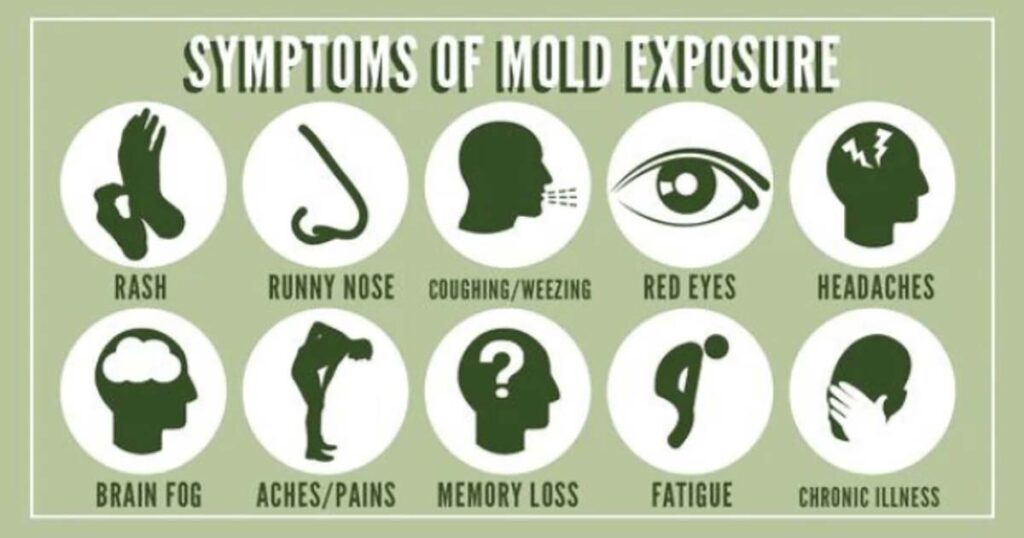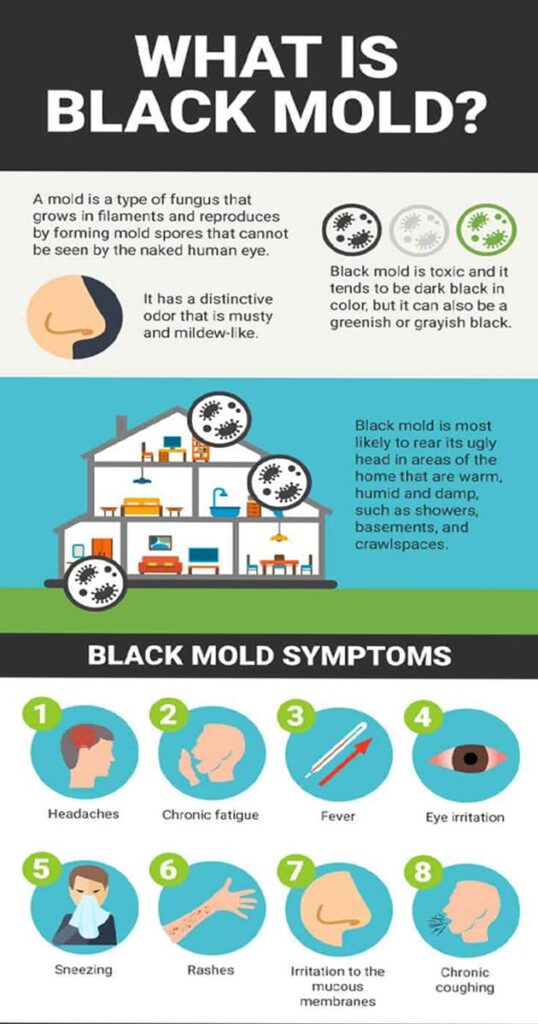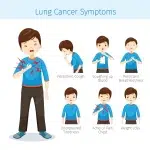Mold is directly not responsible for lung cancer but it may be the potential cause of lung cancer for long exposure. If someone is already affected by asthma, allergies or a weakened immune system they have a higher risk of having lung cancer from the mold. Mold is nothing but fungus, grown up in the home which is out of direct sunlight. In rare cases, long exposure to the black mold may increase the risk of respiratory disease and potentially cause lung cancer in the future. However mold is rather a factor than a direct cause of lung cancer. Primarily lung cancer happens due to smoking, direct exposure to dust for a long time, and industrial chemicals.
Mold and Lung Cancer Risk
If the question is, does mold cause cancer? Answer is may be. There is no direct link between mold and lung cancer, mold is a self grown fungus in the home. It is because of not using the house for many months or years or lack of sunlight in the home may cause mold. If someone is already infected with lung problems like asthma, breathing problems or severe pneumonia they may have the risk of lung cancer from the mold. But it is not a medically approved reason for lung cancer. It is just a potential cause. If you are worried about mold, keep your home clean and use antifungal chemicals to make your home free from fungus.
Mold Exposure and Health Risks
Mold is common to those areas where direct sunlight is not available. Long existence mold has various health risks and causes mild to severe health conditions for the people surrounding that area.
Respiratory issues
Because of mold exposure for a long time, respiratory issues like allergies, asthma, breathing problems may happen. It also may cause pneumonia if the lungs are affected for a long time.
Infections
People with weakened immune systems have more risk of mold exposure. If they are already infected by HIV or undergoing chemotherapy, they have a risk of affecting lungs and other internal body organs.
Mycotoxin Toxicity
Mycotoxins are toxic substances produced by specific black molds that can have serious effects on people’s immune systems. It also can affect the nerve system, if it affects the nerve system people may feel dizziness, sinus problem, lack of concentration, headache and neurological problems.
Skin Problems
Molds are responsible for various skin problems like different types of fungal infection on the skin, skin irritation, itching, skin rash and also psoriasis. Though these are under research, it is not sure that these skin problems only happen because of molds. But self awareness can keep us away from these diseases.
Symptoms of Mold Exposure
Symptoms of mold exposure varies on individual and exposure to the mold. Here are some symptoms of mold exposure that are seen widely among people.

Respiratory symptoms
Respiratory symptoms of mold exposure include coughing, wheezing, shortness of breath, nasal congestion, sore throat and chest tightness.
Allergic Reaction
There are several allergic reactions of mold exposure like, itchy eyes, skin rash, sneezing and runny nose. There can be other allergic reactions depending on the exposure level of the individuals.
Asthma
If asthma happens because of mold exposure or if there is existing asthma in the people it can worsen more.
Neurological symptoms
Neurological symptoms of mold exposure are dizziness, headache, memory problem fatigue and mood change.
Sinus Issues
Sinus issues like sinus congestion and sinus infection can be worsened because of mold infection.
Other symptoms
Other symptoms of mold infection like nausea, sensitivity, coughing up mucus and unusual health damage can happen.
Mold in Homes and Health Risks
Mold grows in damp, poorly ventilated areas. Common spots include bathrooms, basements, and kitchens. Long-term exposure to mold in homes can harm your respiratory system and overall health. Regular cleaning and proper ventilation can help prevent mold growth. Using dehumidifiers can also reduce moisture and prevent mold formation.
Long-Term Effects of Mold Exposure
Long term exposure to mold can have a significant effect on your health. They can face chronic respiratory problems like chronic bronchitis, asthma development and asthma sinusitis. There are other long term effects like lung damage, neurological problems, immune system suppression and other critical issues.
Mold Spores and Lung Health
Mold spores, which are tiny airborne particles, can enter your lungs when inhaled. Over time, these spores may cause irritation or infections. While they don’t cause lung cancer, they can worsen pre-existing respiratory conditions. High levels of spores in the air can also trigger asthma attacks in those with pre-existing conditions.
Toxic Mold Health Risks
Toxic molds, like black mold, release mycotoxins that can harm humans. Mycotoxins can cause: Neurological issues.
- Respiratory irritation.
- Fatigue and dizziness.
- Memory problems and difficulty concentrating after prolonged exposure.
- While harmful, toxic mold is not proven to directly cause cancer.
Black Mold and Lung Cancer

There is no strong evidence that black mold (Stachybotrys chartarum) has any substance that can cause lung cancer. But yes, if you live with black mold for so many years it can affect your respiratory system, can bring changes in your body. There is no solid evidence against black mold being involved in lung cancer.
Can Mold in the House Cause Lung Problems?
Yes, mold in the house can cause lung problems. These include:
- Respiratory infections. Worsening of asthma symptoms.
- Chronic coughing or wheezing.
- Heightened allergic reactions due to mold presence.
- Keeping your living environment dry and clean can reduce these risks.
How Dangerous is Black Mold to Your Lungs?
Black mold is not that much dangerous for short term exposure if you do not have any pre-existing respiratory issues. In everyday life we are living with uncountable bacteria, fungus and other micro insects that stay in our immune system or body. But long exposure to any bad creature like black mold obviously can make changes in your body.
Signs of Mold Exposure in the Lungs
There is no specific sign in your body to identify that it has occurred because of mold. The signs of mold exposure in the lung also look like other lung disease. But if you do not have previous lung issues and suddenly it appears you may take initiative to check whether it is because of mold or not.
Connection Between Mold and Respiratory Illnesses
Mold exposure is mostly connected with the respiratory system. Mold exposure has connection with, allergic rhinitis, asthma, chronic bronchitis, Chronic Obstructive Pulmonary Disease (COPD), Hypersensitivity Pneumonitis (HP), Mycotoxin Exposure, Fungal Infections, Irritation of the Respiratory Tract, Vulnerable Populations.
Preventing Mold-Related Diseases
Though mold exposure is not 100% preventable, you can take initiative to reduce the effects.
- Ensure enough ventilation for your house, office or other area where you stay more.
- Make sure direct sunlight comes to your home, because ultraviolet rays of the sun can kill the fungus and other bacteria.
- Keep very old furniture and other home appliances outside that you are not using anymore.
- You can use iron for your clothing, because iron heat can kill fungus and bacteria.
FAQs About Mold and Lung Cancer
Can mold cause other types of cancer?
There is no medical evidence of other types of cancers that have happened because of mold exposure.
What types of mold are most harmful to health?
Black molds and molds that release mycotoxins are the most harmful for humans.
How can I test my home for mold?
If you want to test mold at your home hire a professional mold testing team or buy mold testing kits to test molds yourselves.
Is it safe to clean mold yourself?
After mold detection if it is in a small amount households can clean it themselves. If it is more, you can hire mold removal professionals to avoid exposure.
Can air purifiers help with mold spores?
Air purifiers with HEPA can extract mold from air and can improve the quality of air. analyze this blog and suggest me what more I can do to optimize this.




